
Diplodus vulgaris The common twobanded sea bream Diplodus… Flickr
Samples of common two-banded seabream Diplodus vulgaris (N = 1097), used in this study, were caught in the Gulf of Gabès (Tunisia) from March 2008 to February 2010. Total length ranged from 7 to 25 cm. Diplodus vulgaris is a protandric hermaphrodite. The overall ratio of females to males was 1:1.66. The reproductive season extended from October to February, and the peak spawning activity.

Diplodus vulgaris Common Twobanded Seabream
Diplodus vulgaris, the common two-banded sea bream, is a species of seabream belonging to the family Sparidae.

Common twobanded seabream Diplodus vulgaris, 20200628 ZooChat
The sea bream, Diplodus vulgaris, is a marine teleost widely distributed in the Mediterranean and eastern Atlantic coastal waters.The larvae colonize shallow waters along rocky shores where, after a short period spent in the water column, they settle. Such habitat transition is characterized by important shape changes, mostly related to their swimming capacity and feeding behavior.
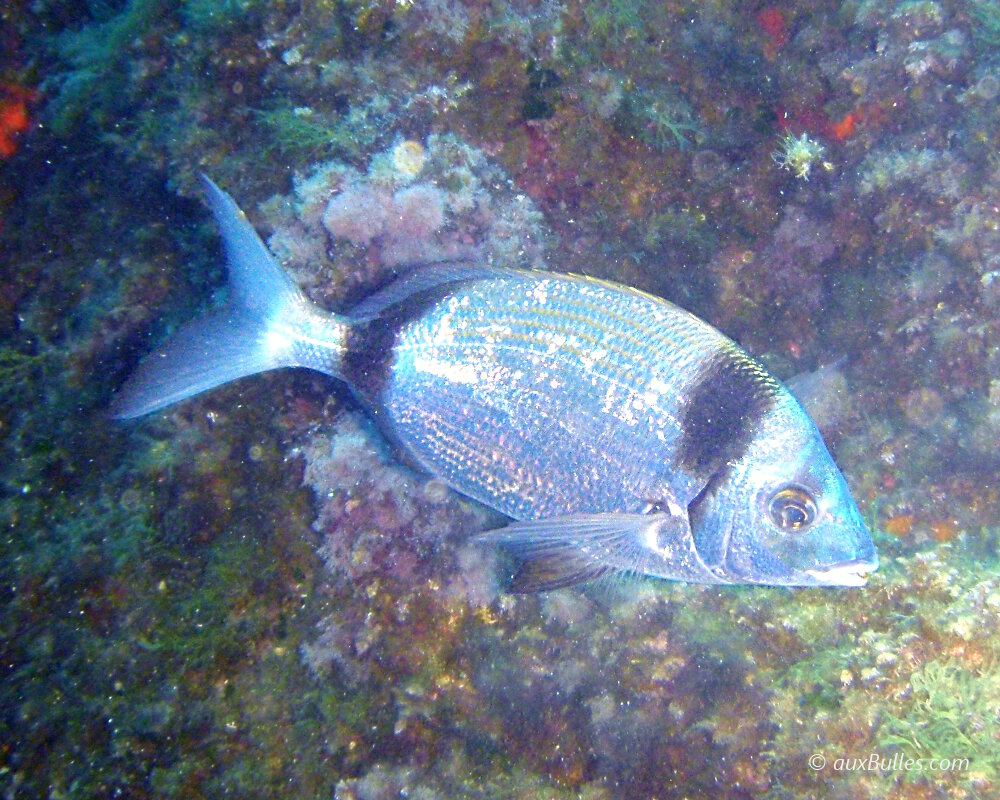
Sar à tête noire (Diplodus_vulgaris) Poissons marins Vie marine
The name of the species comes from the Latin "vulgaris" = common, and, as a matter of fact, it is quite easy to fish. Zoogeography
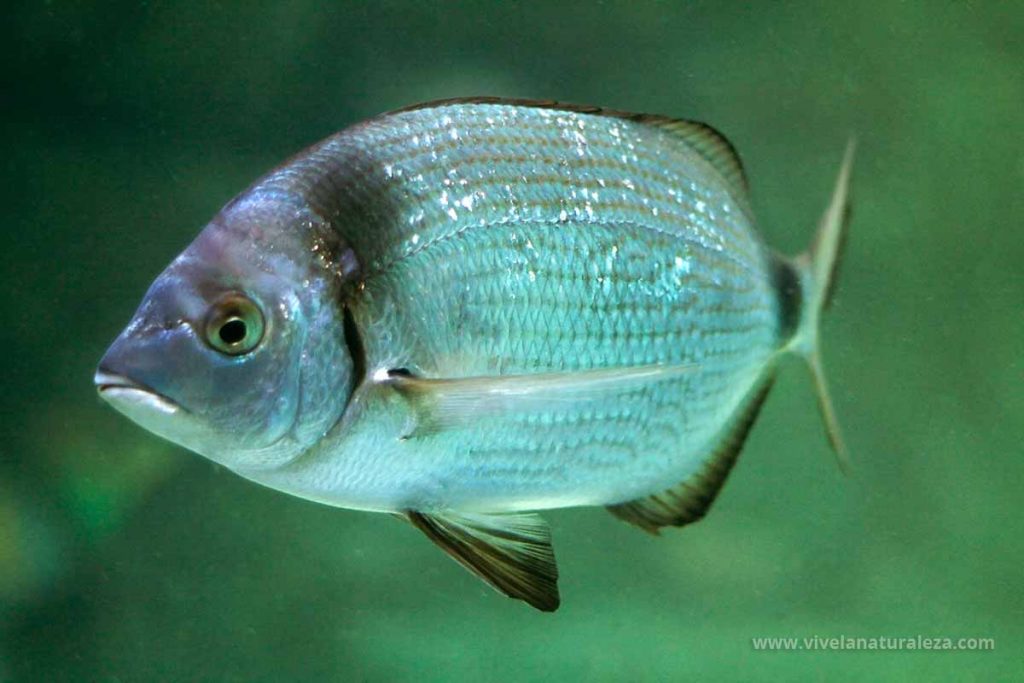
Mojarra Diplodus vulgaris Vive la Naturaleza
The population dynamics parameters of Diplodus vulgaris (Sparidae) from the south and south-west coast of Portugal were studied. 1086 fishes with total lengths ranging from 3.3 to 37.9 cm were obtained from previous gear selectivity studies supplemented by market sampling and beach seining for juveniles (1992-2000).

The Common Twobanded Sea Bream Diplodus Vulgaris. Stock Image Image
Reproductive biology of four Diplodus species Diplodus vulgaris, D. annularis, D. sargus sargus and D. puntazzo (Sparidae) in the Gulf of Tunis (central Mediterranean) | Journal of the Marine Biological Association of the United Kingdom | Cambridge Core
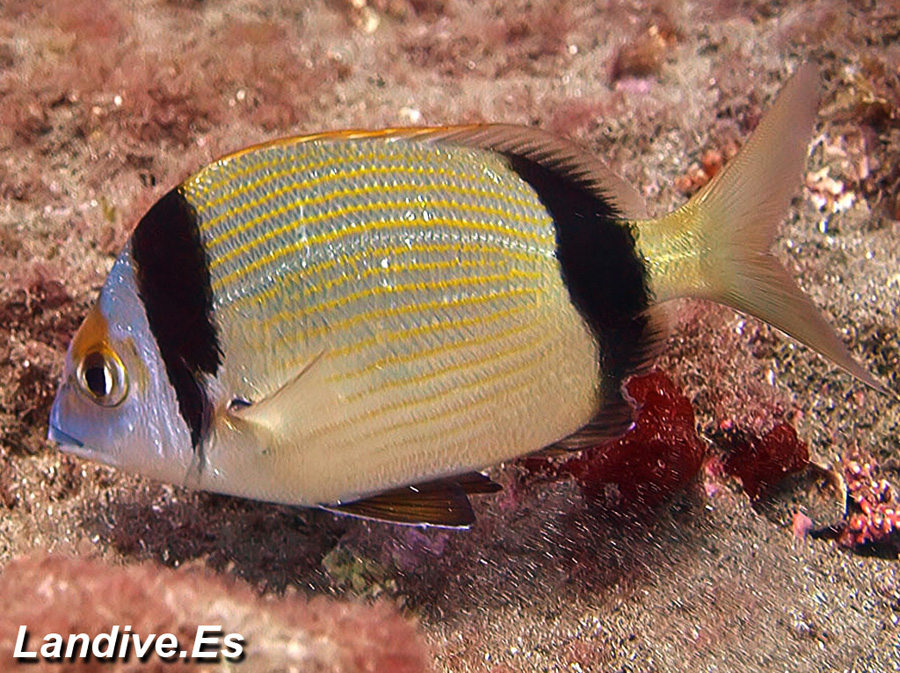
Atlas vida marina Canaria Seifía ( Diplodus vulgaris ) LANDIVE.ES
Diplodus vulgaris Name Synonyms Sargus salviani Valenciennes, 1830 Sargus vulgaris Geoffroy Saint-Hilaire, 1817 Sparus aldrovandi Nardo, 1827 Homonyms Diplodus vulgaris (Geoffroy Saint-Hilaire, 1817) Common names Amarel in Polish Amarel in Polish Aspore abiad.

Common twobanded seabream Diplodus vulgaris ZooChat
Introduction. Diplodus vulgaris (Family: Sparidae) is a benthopelagic species and it lives at depths reaching 160 m. It can grow up to 45 cm and 1.3 kg. It is a widespread species in the Mediterranean Sea, the Black Sea and the Eastern Atlantic Ocean (Froese & Pauly, 2021).In the Mediterranean, D. vulgaris lives in salinity ranging from 37.5 ‰ in the west to 39.5 ‰ in the east (Skliris, 2014).

Diplodus vulgaris Common Twobanded Seabream
Diplodus vulgaris, the common two-banded sea bream, is a species of seabream belonging to the family Sparidae . Description Diplodus vulgaris can reach a length of about 45 centimetres (18 in) with maximum recorded weight of 1.3 kilograms (2.9 lb).

Diplodus vulgaris Common twobanded seabream Reef Life Survey
Classification. Source : World Register of Marine Species Dernière mise à jour 06-12-2023. Authors. Text : © 2005 - 2023. Photos : © Wilfried Bay-Nouailhat.
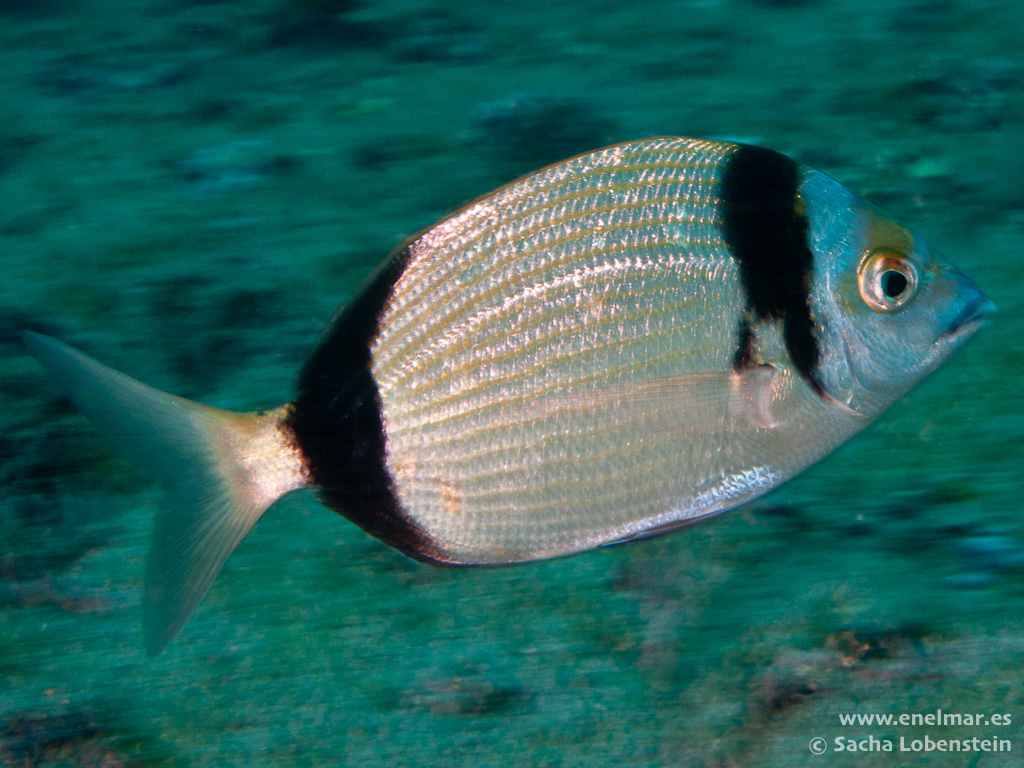
Seif a (Diplodus vulgaris) enelmar.es
The common two-banded seabream Diplodus vulgaris (Geoffroy Saint-Hilaire 1817), is one of the most common Sparidae members and has high economic importance around the Mediterranean.It has a broad geographical distribution from the Atlantic Ocean shores of Africa to the Mediterranean and Black Sea (off Bulgaria).
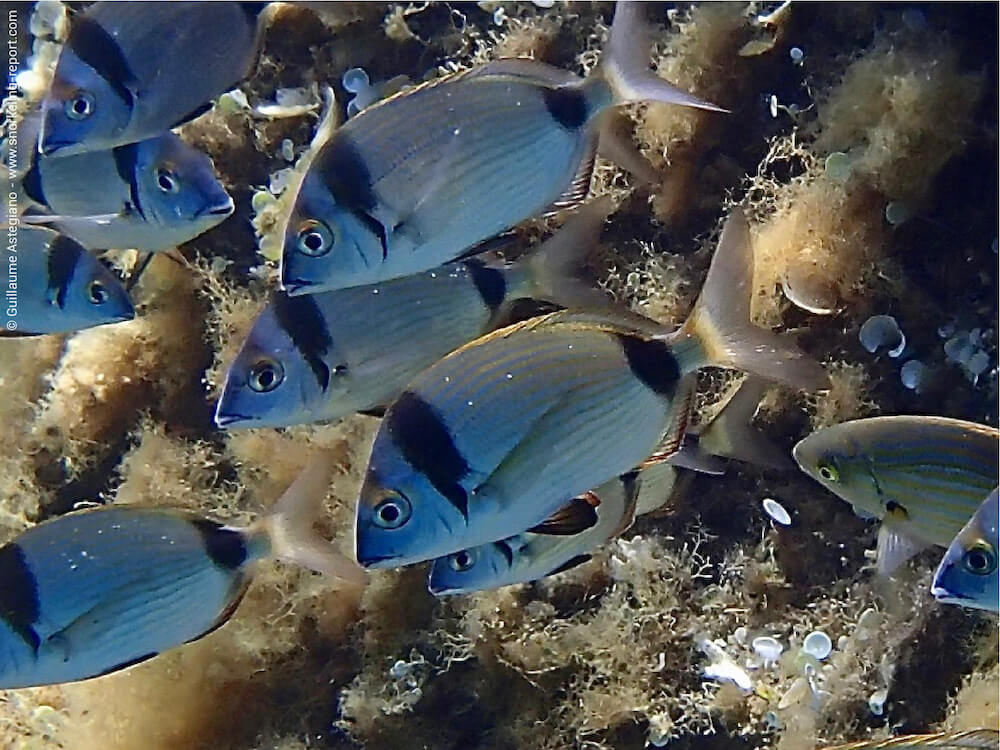
Diplodus vulgaris Sar à tête noire Snorkeling Report
Genus: Diplodus Species: Diplodus vulgaris. Name [edit] Diplodus vulgaris (Geoffroy Saint-Hilaire, 1817) Type material: No types known. Type catalog: Bauchot & Daget 1972. Type location: Egypt, eastern Mediterranean Sea. Synonyms [edit] Sargus vulgaris Geoffroy Saint-Hilaire, 1817; Sparus aldrovandi Nardo, 1827; Sargus salviani Valenciennes.

Diplodus vulgaris Common twobanded seabream Reef Life Survey
A euryhaline species inhabiting rocky and sometimes sandy bottoms to depths of 160 m, but more commonly in less than 50 m. The young are sometimes found in seagrass beds. Adults feed on crustaceans, worms and mollusks (Ref. 3688 ). Important food fish. Life cycle and mating behavior Maturity | Reproduction | Spawning | Eggs | Fecundity | Larvae

Diplodus vulgaris un Sar à tête noire (Diplodus vulgaris) … Flickr
Abstract The sea bream, Diplodus vulgaris, is a marine teleost widely distributed in the Mediterranean and eastern Atlantic coastal waters. The larvae colonize shallow waters along rocky shores where, after a short period spent in the water column, they settle.
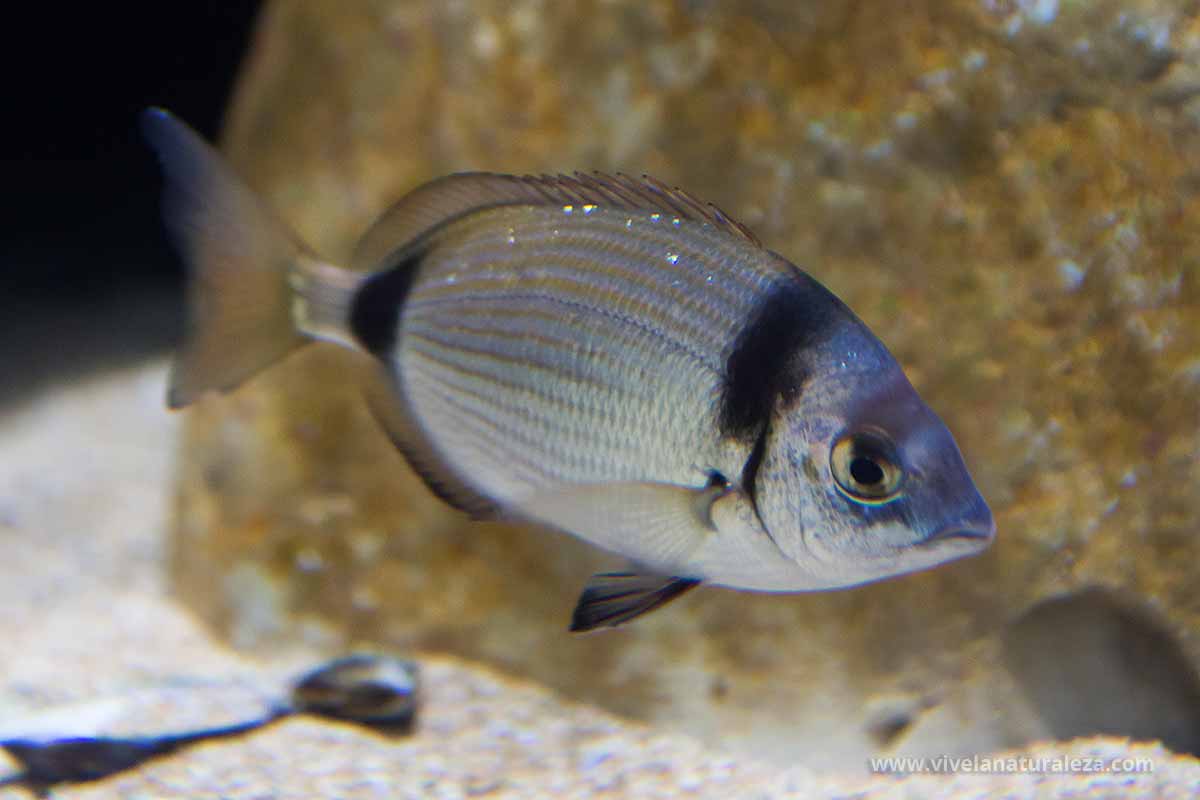
Mojarra Diplodus vulgaris Vive la Naturaleza
45 cm Shape Ovoid Pattern vertical stripes How to recognize Diplodus vulgaris ? Diplodus vulgaris measures between 22 and 45 cm . This fish is unicolore with a predominantly argent body. The also has noir vertical stripes. Behaviour & Life cycle diet carnivorous Sociability living in a group or alone territorial No Way of living diurnal

Diplodus vulgaris (Diplodus vulgaris), Sithonia, Chalkidiki, also
The common two-banded seabream, Diplodus vulgaris (Geoffroy Saint-Hilaire, 1817; Family Sparidae), is an interesting candidate for a phylogeographic study involving the Azores, as its occurrence.